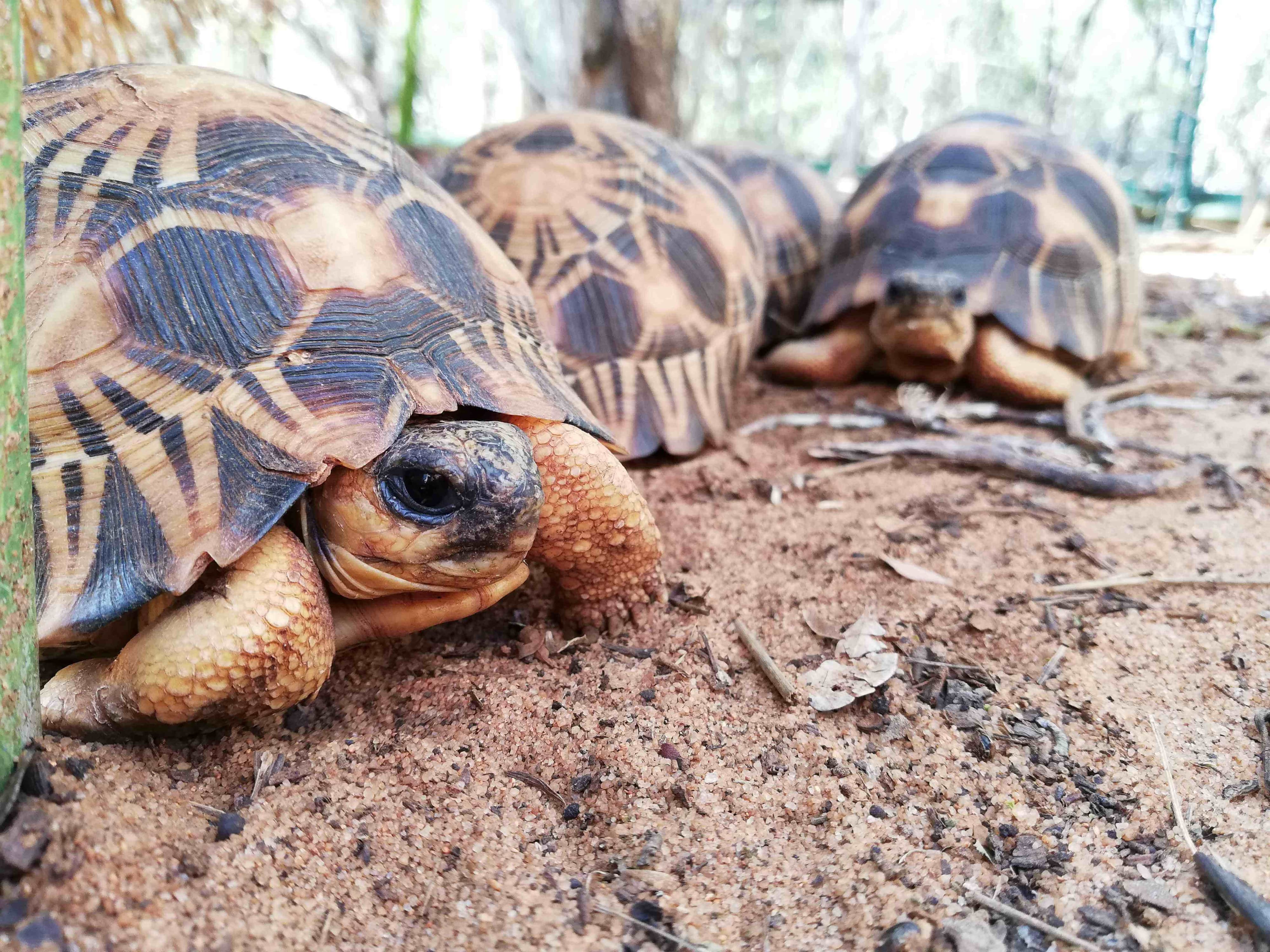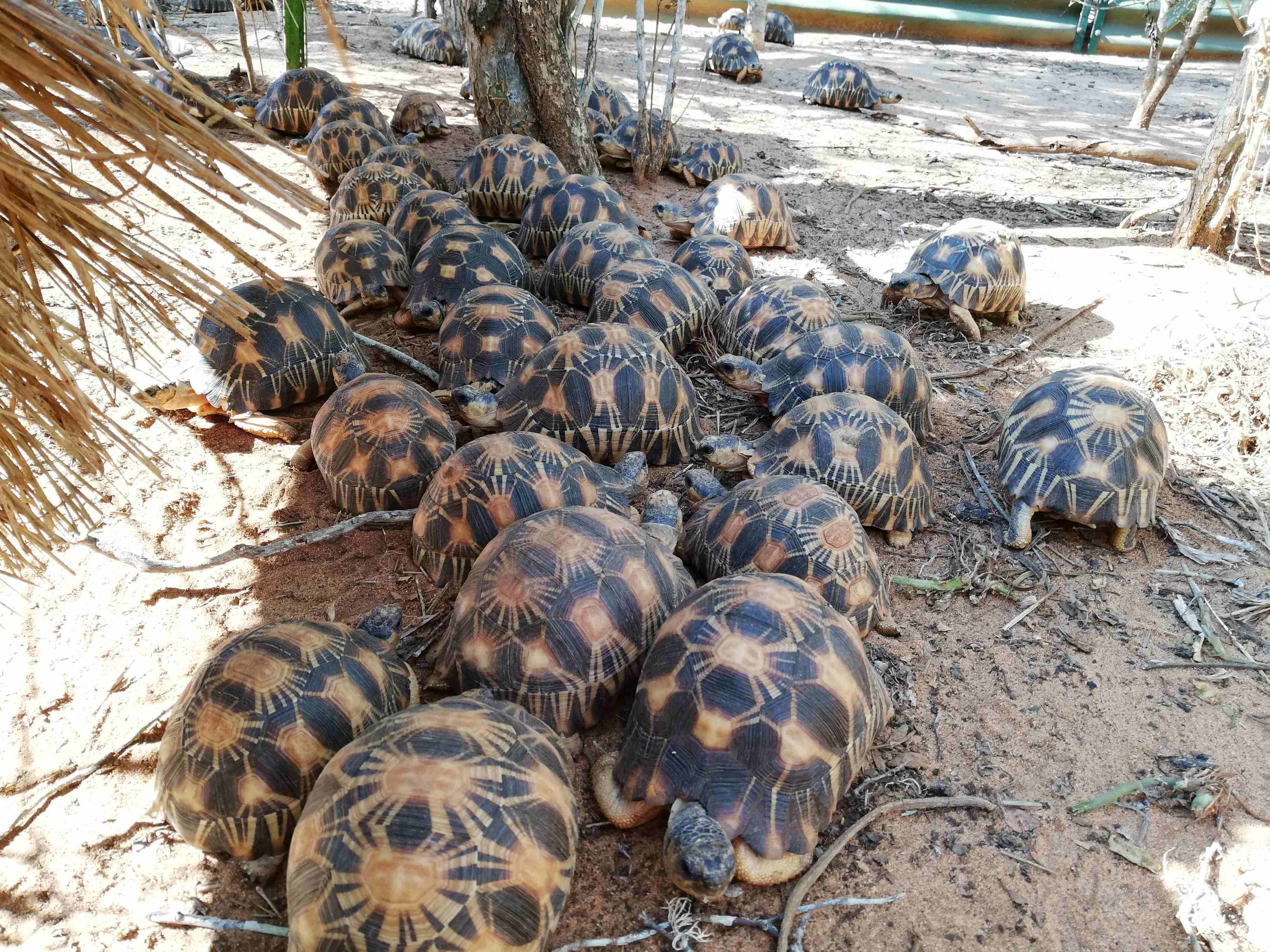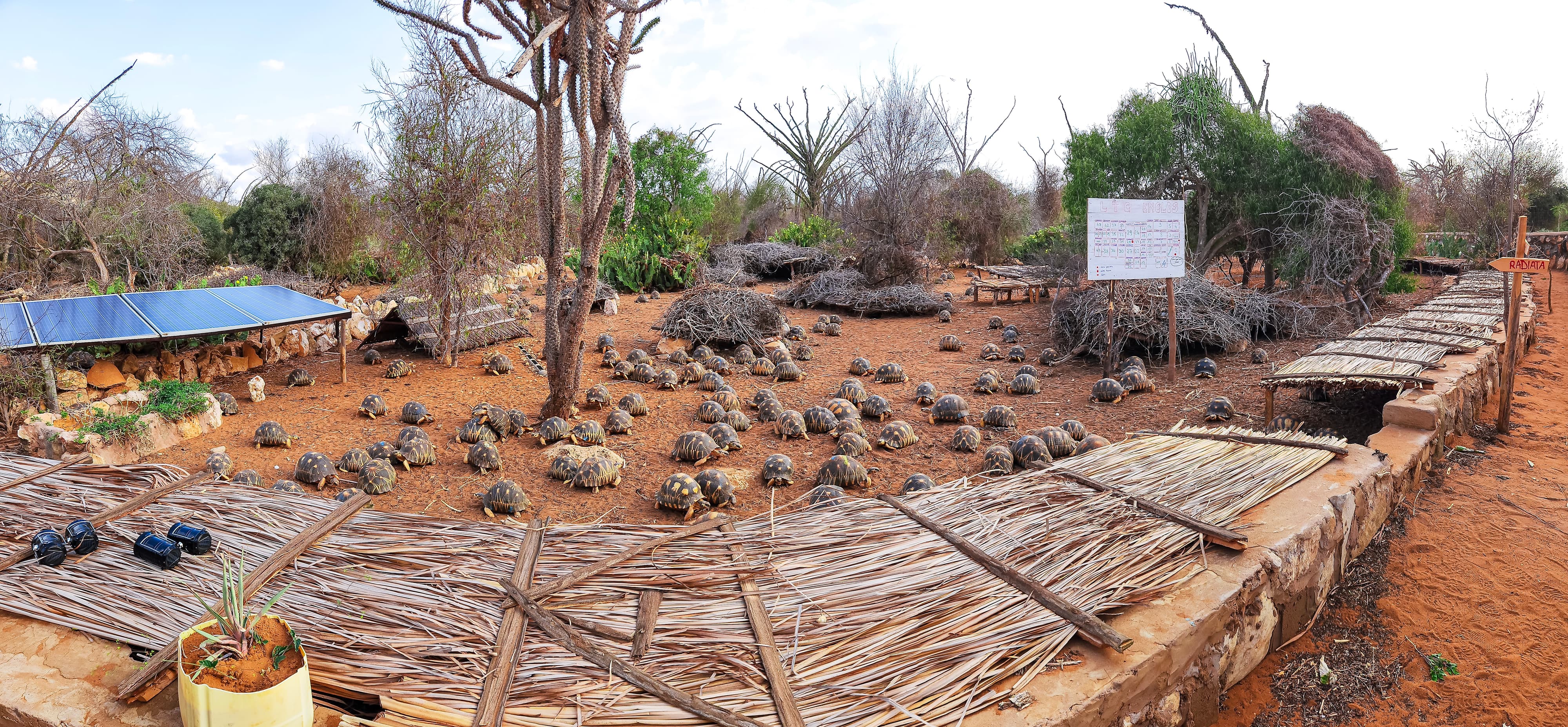Article by Sharon L. Deem, Bonnie L. Raphael and Jamie L. Palmer on behalf of the radiated tortoise veterinary working group, a collaboration of veterinary professionals working for radiated tortoise conservation.
What comes to mind when you hear the word Madagascar? Maybe you think of the 2005 animated film Madagascar that showed a ragtag team of Zoo animals coming face to face with the native wildlife of Madagascar, the island nation close to east Africa. Their adventures included meeting the loveable lemurs and the furry fossa, animals that rightly call Madagascar home. What you didn’t see in the movie, however, was another important species to the island that is today under great threat: the radiated tortoise.

Radiated tortoises are one of the most frequently trafficked wildlife animals on Earth putting them at risk of extinction. This beautiful land tortoise endemic to Madagascar is often illegally exported for sale as pets, a food delicacy or use of their shells in decor.
Historically an estimated 12 million individual radiated tortoises once roamed much of the spiny forests of Madagascar. Today, less than 1.5 million remain and populations continue to rapidly decline, according to the Turtle Survival Alliance, a global conservation organization dedicated to tortoise and freshwater turtles.
Since 1995, tens of thousands of tortoises have been rescued from trade routes just like the group recovered in Thailand this year as they pass through multiple countries in Asia, Europe, Africa and the United States, fueled by the insatiable greed of humans. It’s likely many more slip through international trade routes unnoticed.
Today there are approximately 25,000 radiated tortoises in human care, all recovered from illegal trade, living in Turtle Survival Alliance conservation and rehabilitation centers throughout southern Madagascar. The conservation work being done there is commendable and may be the last hope as we strive to keep a species from going extinct in the wild in our lifetime, though without support, the work can’t get done.
Conservation efforts
Cadres of veterinary professionals, husbandry experts and philanthropists have responded to confiscations involving massive numbers of turtles and tortoises around the world. This challenging work is driven by the passion of team members to care for these individuals, minimize disease issues and work together for our single goal to release as many tortoises as possible back into their spiny forest home in southern Madagascar.
While traffickers make easy money off this critically endangered species, minimizing the damage costs wildlife organizations hundreds of thousands of dollars and countless volunteer hours. The confiscated creatures often suffer from starvation, dehydration, infectious and parasitic diseases and untold other stressors inflicted upon them.
The government of Madagascar and organizations such as the Turtle Survival Alliance, Saint Louis Zoo, the Wildlife Conservation Society and many others are working together to slow the illegal trade and increase survival of this species.
This work includes repatriating thousands of radiated tortoises to safe wild areas and ensuring they do not harbor non-native infectious diseases that have devastated tortoise populations in other parts of the world. Conservationists are also working to curb repeat poaching by enlisting people in regions where tortoises once thrived and where traditional taboos and reverence for the tortoises are honored.

Partnering locally in-country we are more quickly improving the plight of the tortoise while caring for forests, protecting wildlife, enhancing livelihoods and improving access to water and education for local people.
Despite this ongoing work to deter the collection and poaching of wild tortoises in Madagascar, the obstacles remain enormous. It is most often foreign traders with no historical ties to the country that take advantage of the poverty throughout southern Madagascar. No fault of their own, but local law enforcement has often fallen short in stopping illicit sales due to the overwhelming scale of the crisis. But perhaps one of the most demoralizing realities is the ongoing relentless global demand for these tortoises and other wildlife as pets, souvenirs and food items. This demand comes not just from countries “over there,” but is from nations around the world, including the demand—often for exotic pets—right here in the United States.
Why care?
So why should you care about this tragedy unfolding upon one species on one island nation?
We would argue that the world becomes a lonelier and more vulnerable place with the loss of each species humans drive to extinction. Evidence shows the loss of biodiversity—when a species or many species are removed from an ecosystem—results in environmental degradation and an increase in human diseases. Radiated tortoises provide important services to ecosystems by their grazing, seed and food dispersal, and nutrient recycling. The loss of millions of the animals in Madagascar is part of a larger biodiversity crisis in our world that has impacts for other wildlife as well as humans that depend on a healthy ecosystem to survive.

What can you do?
With all conservation efforts, the first step is to educate yourself. We only love that which we know, and we may only want to help that which we have learned to love.
We hope after reading, you will think about the radiated tortoises of Madagascar, the challenges they face, how veterinarians and other conservationists are helping this amazing species and the things we can all do to ensure their survival for generations to come.
We hope, most importantly, that you will join the effort to save this iconic and charismatic tortoise from extinction. One easy way to do so is by supporting one of the many organizations working to stop wildlife trafficking, including the Saint Louis Zoo Institute for Conservation Medicine, the Saint Louis Zoo WildCare Institute Center for Chelonian Conservation and the nonprofit Turtle Survival Alliance that works tirelessly in Madagascar.

